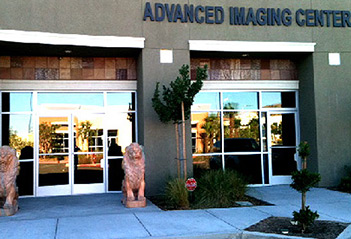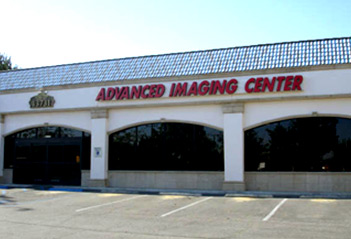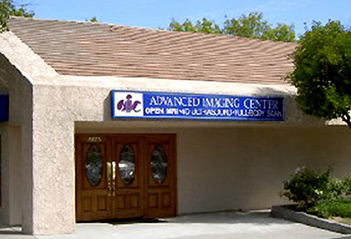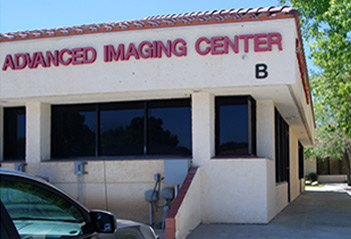FREQUENTLY ASKED QUESTIONS

- - How do I prepare for a Full Body Health Scan?
- - What should I expect in a Full Body Health Scan exam?
- - Should I have any concerns about the Full Body Health Scan?
- - How do I get a Full Body Health Scan?
- - Who should not get a Full Body Health Scan?
- - Is the Full Body Health Scan covered by insurance?
- - What data supports the Full Body Health Scan?
- - How do I prepare for a DEXA Bone Densitometry exam?
- - What should I expect in a DEXA Bone Densitometry exam?
- - Why do I need an injection for a CT scan?
- - What preparation is necessary for a CT scan?
- - How long does a CT scan exam require?
- - What should I expect in a Coronary Artery Calcification Scoring exam?
- - How do I prepare for a Coronary Calcification Scoring exam?
- - What is the cost of a Coronary Calcification Scoring exam?
- - How does MRI operate?
- - What should I expect in an MRI exam?
- - How do I prepare for an MRI?
- - Should I have any concerns about an MRI?
- - How much radiation am I getting from an MRI?
- - I have dental fillings, is an MRI safe?
- - Will I feel anything during an MRI exam?
- - How long does an MRI exam take?
- - Who tells me what the MRI scan shows?
- - What does an MRI show that a CT scan doesn't?
- - How dangerous are x-rays?
- - How do I prepare for an x-ray or fluoroscopy?
- - How do I prepare for an arthrogram?
- - How do I prepare for a pyelogram?
How do I prepare for a Full Body Health Scan?
Other than drinking a glass of water for contrast to distend the stomach, no preparation is necessary, and there are no injections. Before the exam, you will take 5-10 minutes to fill out a detailed medical questionnaire.

What should I expect in a Full Body Health Scan exam?
You lie on a table and in several short breath-holds, the scanner takes images from shoulder to pelvis. The entire scan can be completed in 5-10 minutes. The exam is painless, non-invasive, and non-claustrophobic.

Should I have any concerns about the Full Body Health Scan?
The unique, innovative technology of dual-slice, helical CT delivers high-resolution images in a fraction of the time of conventional CT scanners with less radiation. The lung cancer screening portion of the exam utilizes a low radiation technique.

How do I get a Full Body Health Scan?
The Full Body Health Scan can be ordered by your physician, or you can schedule it yourself. A brief medical history and any prior imaging studies should be provided prior to the procedure.

Who should not get a Full Body Health Scan?
If you have existing disease or are experiencing any symptoms, you should consult your physician first. You should not get a Full Body Health Scan if you are pregnant.

Is the Full Body Health Scan covered by insurance?
Currently, screening procedures are only partially covered, but check with your insurance provider.

How does MRI operate?
Magnetic resonance images are formed by the computer processing of signals that are emitted by body tissue. These signals are generated using a safe magnetic field in combination with radio waves of a specific frequency. Different tissue characteristics are revealed through this process and translated into different contrast levels on the image.

What data supports the Full Body Health Scan?
Henschke. The Early Lung Cancer Action
Program (ELCAP), Radiology, 1998, Vol. 209, P222.
Itah, S., et al. Radiat Med 1998
Mar-Apr; I6(2): 75-83 Screening helical CT for mass screening of lung
cancer; application of low-dose and single-breath-hold scanning.
Conclusion: Screening helical CT with low-dose and single-breath-hold
scanning shows promise for lung cancer screening.
Swenson. Low Dose Spiral CT Screening of
Women for Common Causes of Death. Radiology 1998, Vol. 209, P222.
Wexler, L., et al. American Heart Association Medical/Scientific Statement 1996. Helical CT has
considerably faster scan times than conventional CT. Overlapping sections
also improve calcium detection.

How do I prepare for a DEXA Bone Densitometry exam?
This is not an examination that requires you to have an empty stomach, drink a certain amount of water, or any other such pre-examination preparation on your part.

What should I expect in a DEXA Bone Densitometry exam?
The exam requires about 15 minutes. Generally, DEXA scans of your lumbar spine and hip are obtained. The computer then calculates the average density of bone in the vertebral bodies or hip and compares it with a normal range. Your score is then compared with normal for age values in a chart and the result stated in standard deviations above or below normal for age.

Why do I need an injection for a CT scan?
The dye injection is a clear liquid contrast agent containing iodine. It enhances the soft tissues and helps to define abnormalities. It is essential in visualizing the blood supply to internal organs. The contrast is excreted by the kidneys within several hours. We use only nonionic contrast, a safe agent with very few side effects.

What preparation is necessary for a CT scan?
You may be asked to drink a flavored liquid that highlights the intestine and helps to differentiate the intestine from other internal organs. We also suggest you not eat solid food at least four hours prior to intravenous contrast injections.

How long does a CT scan exam require?
The dual slice helical CT scan is very fast. Once you are on the CT table the scans are performed during a single breath-hold, usually 20-30 seconds.

What should I expect in a Coronary Artery Calcification Scoring exam?
The procedure is performed in less than 10 minutes. The data is actually acquired in a single breath-hold scan, about 20 seconds. The exam is non-claustrophobic, because your head is outside the scanner at all times. The radiation dosage is minimal, less than a regular CT.

How do I prepare for a Coronary Calcium Scoring exam?
No preparation is necessary, and there are no injections.

What is the cost of a Calcification Scoring exam?
The exam typically costs $299. Unfortunately, not all insurance companies cover this procedure. However, many insurance companies will reimburse for the exam if ordered by a physician. Our policy is that payment is made at the time of the visit to our facility.

What should I expect in an MRI exam?
The procedure typically will last anywhere from 20 to 45 minutes,
depending on the type of information required by your physician. All that
is required of you is to be as still as possible during the exam. In fact,
some patients fall asleep during their MRI exam. If you choose, you can
have a family member or friend in the scan room with you.
You will be easily seen by the technologist at all times. For your
convenience, an intercom system is built into the magnet so that if you
should need anything at all, the technologist will be right there.
In certain instances, a contrast agent may be administered to enhance the
study. There are no extra precautions should the doctor require this.
Consult the doctor or technologist to answer any questions you may have.

How do I prepare for an MRI?
No special preparation is required prior to an MRI exam. You may eat
normally and go about your daily routine. Continue to take any medication
prescribed by your doctor unless otherwise directed.
Because of the magnetic field, you will be asked to leave the following
items in a safe place outside the scan room:
- - Coins
- - Jewelry
- - Watches
- - Glasses
- - Credit Cards
- - Keys
- - Hair Pins
- - Other Metal Objects
You may also be asked to remove make-up, dentures and wear a hospital
gown to avoid magnetic interference from belt buckles or zippers.
Once you are situated onto the table, make sure you are comfortable so
that it is easy to keep still. Breathe normally, as there is nothing about
the procedure to make you uncomfortable. The only thing you will notice is
a faint knocking sound which represents the changes in the magnetic field.
Once the exam is over, the technologist will assist you out of the scan
room.

Should I have any concerns about an MRI?
Due to the potential harmful effects associated with all metallic objects in a magnetic field, you should check with your physician or MRI technologist if you have had any brain, ear, eye or other surgeries or any of the following:
- - Pacemaker
- - Foreign Metal Objects in the Eye
- - Metal Implants
- - Neuro-stimulator (Tens-unit)
- - Aneurysm Clips
- - Surgical Staples
- - Implanted Drug Infusion Device
- - Permanent Eyeliner
- - Shrapnel or Bullet Wounds
If pregnant, you should notify your physician.

How much radiation am I getting from an MRI?
NONE. There is no radiation from an MRI.

I have dental fillings, is an MRI safe?
YES. The magnetic field will not affect dental fillings.

Will I feel anything during an MRI exam?
NO. You can relax and listen to your favorite music; you will feel nothing.

How long does an MRI exam take?
20 to 45 minutes is the time required to perform the scan.

Who tells me what the MRI scan shows?
The radiologist interprets the scan and sends a report to your physician.

What does an MRI show that a CT scan doesn't?
MRI is more sensitive to subtle changes in soft tissues, particularly the brain and spinal cord. It is the primary imaging method for evaluation of joints, especially the knee, ankle, shoulder, and wrist.

How dangerous are x-rays?
Considerable precautions must be taken with x-rays, since this
radiation can cause damage. All areas of the patient's body outside the
region to be x-rayed are shielded by a material (usually a metal) that
absorbs x-rays. Technicians, nurses, dentists, and doctors must also be
protected by opaque shields to prevent x-ray damage. Most medical
diagnostic x-rays deliver relatively low doses of radiation and their
value in diagnosis is thought to outweigh any possible risks
Ironically, the damaging effects of x-rays can also be put to medical use.
All types of radiation affect rapidly dividing cells more than slowly
developing cells, because the genetic material that controls cell division
is sensitive to radiation. Therefore, doctors sometimes use concentrated
bursts of x-rays to kill cancer cells, which divide rapidly, while
minimizing damage to the surrounding healthy cells that divide more
slowly.

How do I prepare for an x-ray or fluoroscopy?
- - UGI - No food or liquid 6 hours prior to the exam.
- - Barium Enema - The colon must be cleansed either by laxative, water enemas or both.
- - IVP - Colon cleansing prior to exam and no solid food 4 hours prior to the exam.
- - When necessary, we provide patients with a colon cleansing kit.

How do I prepare for an arthrogram?
You should refrain from eating for 6 hours prior to the procedure. Clear liquids are fine up to 2 hours before the procedure. Take your routine medications before the procedure (such as high blood pressure medications) except stop aspirin and all anti-inflammatory medications (e.g. Motrin/Ibuprofen, Naprosyn/Naproxen, Aleve, Relafen, Daypro, Indocin, Celebrex, Vioxx, Trilisate, etc.) 5 days before the procedure. If you are taking oral (pill form) diabetes medication, DO NOT take the medication the morning of the procedure. If you are taking insulin injection, inject only HALF of the usual scheduled dose the morning of the procedure. If you are taking St. John's Wort, Ginkgo, Ginseng, or Garlic supplements, you will need to stop these 5 days prior to the procedure. All of your routine medicines and supplements can be re-started after the procedure on the same day. You may take your regular pain medicine as needed before/after the procedure. If you are taking Coumadin/Warfarin, heparin, Lovenox/Enoxaparin, please call the physician who prescribed the medication prior to your visit. If you are taking Plavix/Clopidogrel, Ticlid/Ticlopidine, or Pletal/Cilostazol, you must notify our office and the physician who prescribed the medication so that the timing of stopping these medicines can be explained. If you are on antibiotics, please notify our office, we may postpone the procedure until you have finished the medicine. If you have an active infection or fever, we will not perform the procedure. If you are a woman of childbearing age and you know or suspect that you may be pregnant, we will not perform the procedure. If you have a known allergy – rash, hives, or anaphylaxis – to iodinated contrast agents, please contact our office 1 week prior to your procedure. You may need to bring a driver with you. You may return to your current level of activities the next day, including return to work.

How do I prepare for a pyelogram?
If you are allergic to Iodine or Shellfish you may not be able to have a CAT SCAN with contrast.In some cases premedication may be necessary to prevent an allergic reaction prior to CAT SCAN. A blood test called BUN and Creatnine must be done at least 30 days before having a CAT SCAN with contrast.The results must be normal. If you are currently taking Glucophage you must stop your does for 48 hours after your CAT SCAN. Repeat BUN and Creatnine at 48 hours. You may resume your normal dose of Glucophage if results are normal. If results are abnormal please contact your Primary Physician.


OUR LOCATIONS








